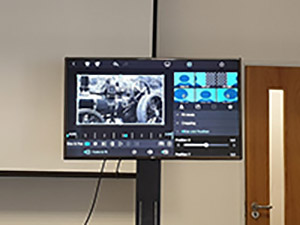 Learn to create video content for the web
Learn to create video content for the web
By Noel Armstrong, MCIPR
September 11, 2019
Creating high-quality videos is much easier nowadays, thanks to smartphone technology and editing apps, many of which are free to download. CIPR runs a two-day course that shows you how to make professional looking videos that you can use for internal communications within your organisation.
After finishing an internal communication contract at London Business School, I decided to spend some of my time between contracts, brushing up on new skills. I was attracted to a CIPR training course that aimed to help communicators create video content for the web.
The course is run by a former BBC journalist, John Whyte-Venables, who guides you through the end-to-end planning, filming and editing process. The course is very much hands on, and working in small teams, you get to practise each segment of the course as you progress. You get a chance to use different equipment (like tripods and microphones) and various filming and editing apps. Most of the course is focused on what can be achieved using smartphones. You also come away with a useful training manual to refer to when practising after the course has finished.
The training is set out over two days, and on the morning of day one, you’re shown how to plan your video – looking at the structure, the elements within, and the approach to the film (messaging or storytelling). The morning concludes with a look at interview techniques, covering how to achieve a professional looking interview and getting the best out of interviewees.
The afternoon of day one starts with advice on selecting scenes and shooting different sequences. Here, you learn about different types of shots, including: wide shots, close-ups, point of view clips (POV) and side shots. The course shows you how professionals use different shots and cutaways (where you see different clips while hearing an interview or a voiceover) to achieve high-impact news stories.
One of the highlights of the course appears on the first afternoon, where you get to go out and film – practising the skills you’ve learned over the first few hours of the training. This particular training course took place on one of the hottest days of the year (38c in London) and each group – working in pairs or in threes – decided to put together films looking at the impact of the hot weather on local businesses.

The morning of day two starts with a brief recap of the previous day, before an introduction to editing, using different editing apps like iMovie (included in the iPhone and iPad) Kinemaster (available in the AppStore and Google Play) and Lumafusion (only available in the AppStore). It’s in this part of the course you’re taught how to import videos into the apps, how to edit the films in each app (splitting at the playhead) and how to add cutaways to your films.
The afternoon of the second day examines how to add effects, like the name of the interviewee, subtitles and music. The day concludes on an exciting note, where each of the final films is viewed on the TV screen. I have to say that each group did a brilliant job and produced some fantastic footage – filmed in the street, in shops (including a Vespa showroom), in coffee shops, in gyms and in tube stations.
I can highly recommend this course. It will show you how to produce high-quality videos that you can use in both your work and your leisure time. Smartphones now rival expensive camcorders for quality, and editing footage and adding effects is made relatively easy using dedicated apps. While you could teach yourself how to film and edit footage, a large part of the value in this course comes from the expert advice of the trainer, who guides you through the planning process, creating a storyboard, and the tricks of the trade to capture great footage. Video expertise is a valuable skill for communicators to add to their toolkit. If you’re keen to attend the next course, running in November, you can find details on the CIPR training pages.
Noel Armstrong is a communications and events specialist and a member of the CIPR Inside committee.
@noeltarmstrong.